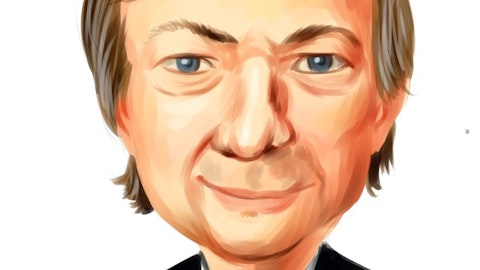Yan Zheng: Okay. I will do the translation. The fluctuation of our asset quality in Q3 was mainly a result of two factors adding together. The first is, from a macro perspective, the key macro indicators are below the expectation. The second reason is that the seasonality of the credit industry in the sense that the liquidity is typically better in the first half than second half, which led to some fluctuation of our asset quality in Q3. However, we expect the situation, especially the liquidity situation, will improve in early next year, which may help improve the risk performance of our new loans issued in Q4. At the same time, we swiftly adjusted our operations by upgrading our user base, tightening our credit assessment criteria and reducing the exposure of our existing borrowers since Q3.
Accordingly, our early risk indicators for new loans say our FPD7 [ph] improved by 5% sequentially in September, and we expect it to continue to improve in October. And in Q4, we have further strengthened our risk management tools from three aspects. First, we incorporated the scorecard data from three leading Internet platforms and build joint model with those platforms. Second, we deep dive into our internal data and upgrade our regular B-scorecard by further leveraging our app data and PBOC data, using sequence algorithm and large models to — large language models to construct risk, sub-analysis aiming for an integrated B scorecard and further improved screening capability by the end of November. Third, we will upgrade our post-lending risk models and generate fast responding B scorecard rating system by end of December, primarily based on recent samples, which is more helpful for us to identify new risks.
Putting together all these efforts, we expect the risk performance of the new loans originated in November and December will stabilize.
Wu Haisheng: Regarding pricing, I would say, from our own intention perspective, we will conduct different pricing tests for various customer groups to improve user stickiness and satisfaction. Through more attractive pricing, we are also able to acquire quality new users to improve our user mix. Meanwhile, we will also raise our pricing for higher-risk users. Combined, our average pricing will continue to keep stable. Under current macro environment, consumer finance is also one of the means to boost consumption and economy. Under the current regulatory system, this is a multilayer supply system for the consumer credit industry. And based on that, we will also set price based on supply and demand dynamics and actively play our role to drive the consumption and help SME players.
Operator: Next question comes from the line of Emma Xu of Bank of America Securities. Please go ahead.
Emma Xu: So my question is about your shareholder capital return. It’s really encouraging to see that you continue to buy back your shares at current level. And I just want to ask whether you will continue to do the buyback. And after the completion of the current buyback program, will you launch more buyback program in the future?
Alex Xu : Okay. Emma, I will take this question. So as you said, we already did $80 million repurchase since June 20, well ahead the time line. And obviously, we will continue to execute the current repurchase program throughout the remainder of the year and also into next year. We already structured internally a very kind of a comprehensive system to periodically review our cash position as well as the use — the efficient usage of the cash, try to compare the expected return between the reinvestment in operations and the return generated from either the buyback or the dividend payment. Through this kind of a review, we will determine which is the best way to deploy additional cash or additional resource in the future. So we — after we complete the current buyback program as well as this year’s dividend plan, we will do a new review based on the cash position at that point and make necessary changes to the shareholder return program either through a buyback or through a dividend or through some kind of a combination of the both.
In summary, basically, the logic behind our future cash deployment is based on whichever method can generate the highest shareholder return. Then, we will use the cash to that direction.
Operator: Next question, we have the line from Cindy Wang from China Renaissance. Please go ahead.
Cindy Wang: Thanks management team to giving this opportunity. So my question is about the management strategy for capital-light and capital-heavy assets. Can you help us breakdown the current profit margins of capital-light and capital-heavy loans? And how does the management view the proportion of capital light and the capital heavy loans in the future? So compared with the growth of loan volume, will company be more focused on the profitability in 2024?
Wu Haisheng: Okay. Thanks, Cindy. Regarding the profitability of our capital-heavy, capital-light business model, I would say both capital-heavy and capital-light loan facilitation model generates a roughly 3% net take rate with capital heavy a little bit higher than 3% and the capital light a little bit lower but pretty close to 3%. In terms of the loan mix, we will balance profitability and the long-term healthiness of our loan portfolio and keep a dynamic balance between these two categories. Regarding the importance of loan volume versus profitability, I would say it is not our priority to either pursue loan growth or pursue probability improvement. If we only pursue profitability, we can just all do as a heavy business like some other platforms. But our target is to balance profitability and the long-term healthiness and the sustainability of our loan portfolio. So we expect loan mix will maintain largely stable in the foreseeable future.



